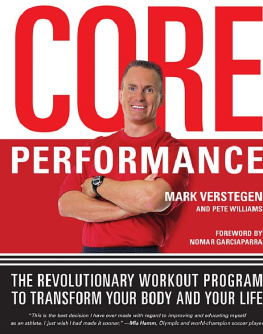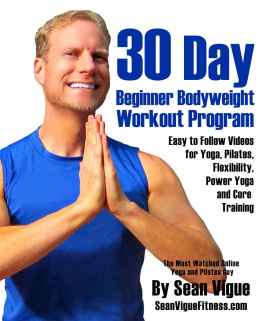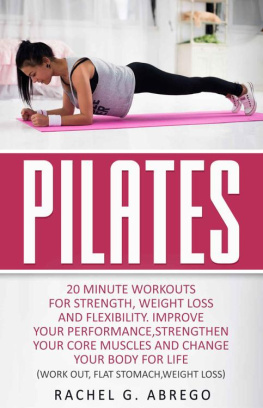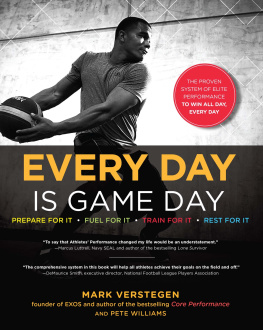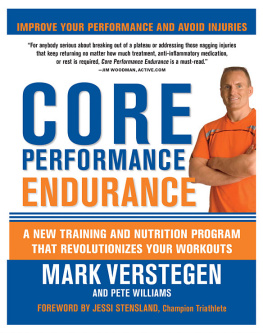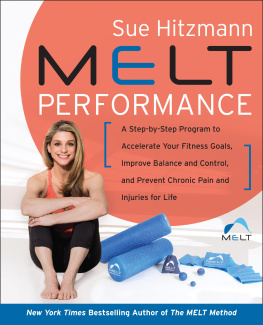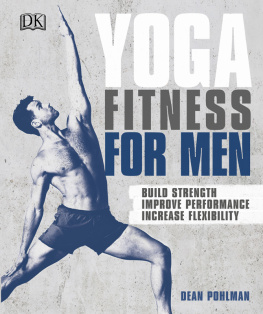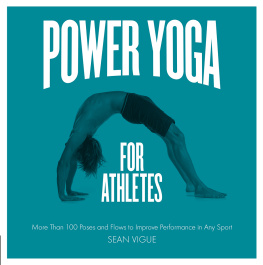

CONTENTS
Appendix B: Elasticity

INTRODUCTION
THE GAME OF LIFE
A thlete n. A person possessing the natural or acquired traits, such as strength, agility, and endurance, that are necessary for physical exercise or sports, especially those performed in competitive contexts.
Everyone is an athlete. Even if you dont play sports, you compete each day in the Game of Life. In order to succeed, you need a strategy to build and maintain the necessary strength and energy to accomplish your goals.
The day-to-day life of a corporate worker, student, or stay-at-home parent is just as physically and mentally grueling as anything youll find in sports. I work with professional athletes who accomplish tremendous feats, but even the challenges they face sometimes pale in comparison with those that the vast majority of people face every day.
After all, athletes spend most of their time practicing for short periods of competition, and they have the benefit of off-seasons. Most of us have no time to practice; the game is going on all the time. There is no off-season, except the occasional vacation or holiday. The competition never ends.
Not only that, but we risk a lot more than not making the playoffs or taking home the title: Our performance impacts the quality of life and destinies of those we care about most. The stakes could not be higher.
Look at the definition of athlete above. Even if you have never picked up a ball and have no intention of doing so, you need strength, endurance, and agility just to get through daily routines; resist fatigue, frustration, and distraction; and meet the demands of life.
For all the talk of creating washboard abs, counting carbs, and losing weight, many of us have lost sight of what really matters: improving our physical and mental well-being to ensure a productive day-to-day existence, to say nothing of a long and healthy life.
Dont get me wrong; its important to look great. But why not take the same amount of time and effort that many people invest only in looking good and follow a program that produces not only cosmetic changes but also increases energy, sharpens your mental edge, and reduces and prevents nagging pains in your back, knees, and hips?
Sound good? Heres even better news: You dont have to spend hours in the gym, deprive yourself of tasty food, or acquire an advanced degree in exercise science to understand the regimen.
Core Performance Essentials, as the name suggests, includes everything you need and nothing you dont. The entire program can be done either at the gym or in the comfort of your own home, with only a minimal investment in equipment. Even then, if you dont want to swallow that cost, there are exercise variations that dont require equipment.
You wont be forced to follow a diet program thats aggravatingly complicated, impossible to adhere to, or ineffective. Instead, youll learn simple principles and recipes that will trim your waistline and food bills while improving your performance.
First, you need to understand that this is a long-term strategy. Youll notice theres no time-stamped subtitle to this book: No 12 Weeks to a Better You; no 6-Week Plan for Great Abs. This is not a quick fix, a New Years resolution, or an extreme makeover. I dont want this to be the latest in a series of programs you try, only to give up when you become bored, get too busy, or become frustrated.
After all, even the most successful athletes or businesspeople dont quit after one good or bad season. Im fortunate to help some of the worlds greatest athletes build successful careers, and I want to provide you with similar tools to lead a life of sustained performance and improve your long-term health.
Will it take some effort? Of course it will. You must want to bring out the athlete thats inside of you. But before you start thinking that this process isnt for you, pay heed to the first rule of investing: Past performance is not indicative of future return. No matter how bad off you are right now, youre not doomed to poor health and an early exit if you take action now. On the other hand, if you dont take action, that past performanceor lack thereofwill result in an unhappy future return.
Unfortunately, its an uphill battle. Its easy to be beaten down by this fast-paced culture; its easy to think you can eat whatever and whenever you want; its easy to abandon consistent exerciseor abstain from it altogetherand still feel like youll come out ahead. So you grind harder, firm in the belief that you can outwork and outhustle anyone through sheer willpower.
Sooner or later, your body will break down due to injury or illness. Its a vicious downward spiralthe harder you work, the more run-down you become and the less energy you have. Nobody can keep up the pace forever unless they have, like the best athletes, a game plan to help them. The idea is to sustain this winning energy level throughout your life.
For instance, lets say youre a successful executive. You wake up in the morning after a short, restless sleep. You hustle out the door and grab a muffin and an expensive, calorie-laden designer coffee on the way to work. While answering e-mail and putting out a few office brush fires, you chug diet soda or more coffee. By lunchtime, youre starving, so you grab some takeout or head to a restaurant for a meal that offers little nutritional value. By midafternoon youre dragging, so you drink more caffeine and get a jolt of sugar from the vending machine. Still, you struggle to get as much work done as youd like, so you either stay late or take work home, where you eat the first thing you can find, perhaps pizza or pasta. By now, the day is over and your back, as usual, is killing you. Youve had no time to exercise. Instead of releasing endorphins and recharging with a workout, you unwind with a few martinis or glasses of wine. Youre too exhausted to give quality time to your significant other or kids. Its all you can do to slump in front of the TV for a few hours, grazing on more junk food before collapsing in bed for another short, restless sleep before repeating the process the next day.
Sound familiar?
If not, lets say youre a stay-at-home parent. Youre jolted from a brief slumber by a screaming baby, and you stagger around for an hour, dealing with the toddler and getting an older child or two off to school. The youngest commands your attention for most of the day, a whirlwind of diapers, feedings, and playdates. Soon its midafternoon and its time to chauffeur the kids to sports, music practices, and other extracur ricular activities.
Along the way, you must handle the crush of household routines, the inevitable home maintenance crisis and, oh yeah, the small matter of feeding yourself. Dinner time arrives and all youve consumed is coffee and the fast-food lunch on the way back from the playdate. Youd like to work off the extra pounds youve packed on in recent years, but who has the time?
Perhaps youre a student. You wake up too late to have a substantial breakfast, if any, and because youre not allowed to eat in class, youre famished most of the morning. Because of tight budgets, the cafeteria or student union offers little beyond highly processed, high-starch meals, but it does provide soda and vending machines. That burst of sugar carries you through part of the afternoon, but soon, youre struggling to stay awake in class and youre even feeling hungry again.


